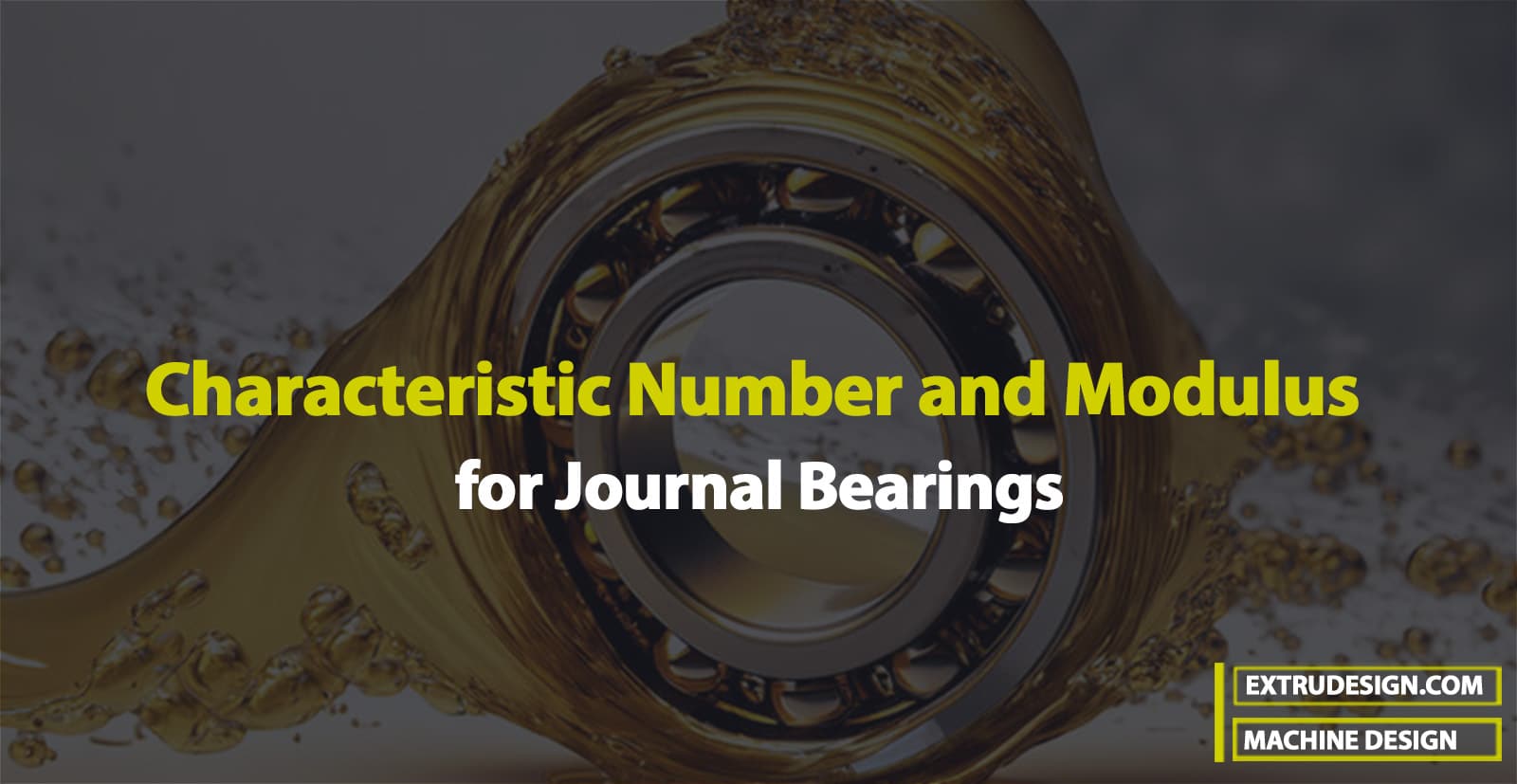A bearing is a machine element that supports another moving machine element known as a journal. It enables a relative motion between the contact surfaces of the members while carrying the load. While doing so a certain amount of power is wasted in overcoming frictional resistance due to the relative motion between the contact surfaces. We need to study the types of Bearings, design, and materials used for bearings briefly. In the previous article, we discussed the different types of Bearings. Hydrodynamic Lubricated Bearings are a type of bearing that comes under Sliding Contact Bearings. In this article, let us discuss the Bearing Characteristic Number and Bearing Modulus for Journal Bearings.


A little consideration will show that a certain amount of power is wasted in overcoming frictional resistance due to the relative motion between the contact surfaces. If the rubbing surfaces are in direct contact, there will be rapid wear. To reduce frictional resistance and wear and in some cases to carry away the heat generated, a layer of fluid known as lubricant may be provided. The lubricant used to separate the journal and bearing is usually a mineral oil refined from petroleum, but vegetable oils, silicon oils, greases, etc., may be used.
Bearing Characteristic Number for Journal Bearings
The coefficient of friction in the design of bearings is of great importance because it affords a means for determining the loss of power due to bearing friction. It has been shown by experiments that the coefficient of friction for a fully lubricated journal bearing is a function of three variables, i.e.


Therefore the coefficient of friction may be expressed as


Where
μ = Coefficient of friction,
φ = A functional relationship,
Z = Absolute viscosity of the lubricant, in kg / m-s,
N = Speed of the journal in r.p.m.,
p = Bearing pressure on the projected bearing area in N/mm2 = Loadonthejournal÷ l×d d = Diameter of the journal,
l = Length of the bearing
c = Diametral clearance.
The factor ZN / p is termed as bearing characteristic number and is a dimensionless number. The variation of the coefficient of friction with the operating values of bearing characteristic number (ZN / p) as obtained by the McKee brothers (S.A. McKee and T.R. McKee) in an actual test of friction is shown in the following graph. The factor ZN/p helps to predict the performance of a bearing.
The part of the curve PQ represents the region of thick film lubrication. Between Q and R, the viscosity (Z) or the speed (N) is so low, or the pressure ( p) is so great that their combination ZN / p will reduce the film thickness so that partial metal-to-metal contact will result. The thin film or boundary lubrication or imperfect lubrication exists between R and S on the curve. This is the region where the viscosity of the lubricant ceases to be a measure of friction characteristics but the oiliness of the lubricant is effective in preventing complete metal-to-metal contact and seizure of the parts.
It may be noted that the part PQ of the curve represents stable operating conditions, since from any point of stability, a decrease in viscosity (Z) will reduce ZN / p. This will result in a decrease in coefficient of friction (μ) followed by a lowering of bearing temperature that will raise the viscosity (Z).
Bearing Modulus for Journal Bearings
From the above graph(Variation of coefficient of friction with ZN/p), we see that the minimum amount of friction occurs at A and at this point, the value of ZN/ p is known as bearing modulus which is denoted by K. The bearing should not be operated at this value of bearing modulus, because a slight decrease in speed or slight increase in pressure will break the oil film and make the journal operate with metal-to-metal contact. This will result in high friction, wear, and heating.
In order to prevent such conditions, the bearing should be designed for a value of ZN / p at least three times the minimum value of bearing modulus (K). If the bearing is subjected to large fluctuations of load and heavy impacts, the value of ZN / p = 15 K may be used.
From above, it is concluded that when the value of ZN / p is greater than K, then the bearing will operate with thick film lubrication or under hydrodynamic conditions. On the other hand, when the value of ZN / p is less than K, then the oil film will rupture and there is a metal-to-metal contact.
